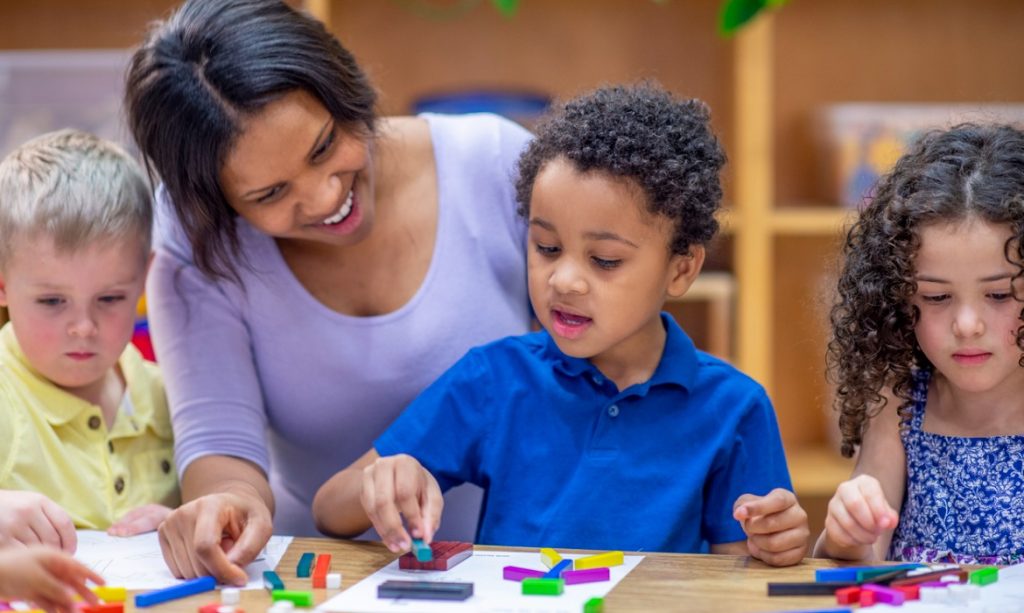Our world consists of things that are made from shapes and situated in spaces and places. From the earliest years, as children explore their everyday surroundings, they are learning about whether things are near and far, up and down, round and straight, and much more. Understanding the attributes of these things, where they are, and how to get to them are some of the most important aspects of math development in a young child’s life. This knowledge of geometry and spatial relations—where something is in relation to something else—allows children to organize and locate things, describe what they see, and express their needs and concerns (“My teddy bear is under the bed!”).
Teachers can help reinforce and extend children’s ideas of spatial relations. Teachers need to be able to offer opportunities in both structured and non-structured activities that support spatial thinking and concepts. Fortunately, these activities can be among children’s favorites in the classroom, including puzzles and drawing.
The DREME Teacher Educator team created a robust set of professional development materials for teacher educators to use with teachers to grow their confidence in supporting the development of key early math skills. This blog highlights materials that prepare teachers to grow children’s geometry and spatial skills.
Teaching and Extending Early Spatial Skills
We drew upon research and our own experiences as teacher educators to help teachers design math learning opportunities around geometric ideas and how things are related in space that are intentional, developmentally appropriate, engaging, and playful.
Why and What of Spatial Relations: Spatial relations is more complex than usually assumed and learning it can be challenging. These resources summarize why young children need to develop spatial skills.
Mathematics of Spatial Relations: Several different approaches to analyzing and explaining the important math ideas that make up spatial relations.
Development of Children’s Spatial Relations Skills: Videos of children problem solving, activities for teachers, and readings that explore how children think about shape and space.
Assessing Spatial Relations Skills: Materials about assessment approaches so that teachers can identify what children know and need to learn about space and place.
Supporting Classroom Practice: Ideas for teachers to develop their own classroom practices that engage young children in spatial relations.
Vignettes: Fictionalized but very real examples about what it’s like to teach and learn to teach spatial relations.
Getting Started: Inspiration to use these materials flexibly, with varied settings, amounts of time, and participants. We present a variety of possible ways to get started with these resources.
Resources Created for and by Teacher Educators
The DREME Teacher Educator website houses a trove of free early math teaching and learning resources, including videos, hands-on activities, handouts, and articles. The materials are flexible and easy to use in a variety of settings, from a professional development workshop to an entire preservice course in teaching math to young children.
The website is organized into modules addressing early math content areas, plus an Overview section:
We recognize that children come to school with diverse experiences and math-related knowledge that teachers can harness. Our materials focus on developing the ability of teachers to promote deep mathematical understanding in all children.



